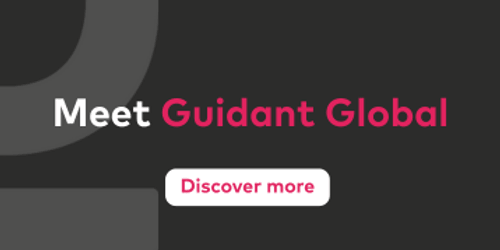

Author
4 minutes
Diversity and Inclusion terminology: a guide to inclusive language
Language is powerful. When used well, it helps to form bonds. When used carelessly, it can create division. To create a truly inclusive work culture, the everyday language we use needs to ensure that everyone within a business feels welcome.
It’s easy to forget just how important language is. Words allow us to communicate with our colleagues, to understand complex problems, to think – language even permeates our dreams at night.
In short, language is extraordinarily powerful. On the other hand, it can be incredibly destructive – particularly when used toward people who have historically been discriminated against. One misplaced word can lead to the negative continuation of stereotypes. A lack of understanding risks tearing apart any organisational progress made towards inclusivity.
If we want to empower everyone within a business and create a truly inclusive workplace, we need to be aware of the vocabulary we use.
INfluence is Guidant Global’s inclusion initiative that enables our employees to upskill one another and deliver the knowledge, tools and opportunities which allow every member of #TeamGuidant to build confidence in each area of diversity, equality and inclusion.
INfluence believe that the words we use matter – they can reflect bias or challenge it, bring individuals and teams together or divide them.
We have put together an expansive glossary of terms used within the D&I sphere. Share with your colleagues, teams, and clients so that we are all using the same, inclusive language.
A caveat: this list isn’t exhaustive, nor is it the final word. As the diversity and inclusion field develops, many of these terms may evolve too.
The point is to keep learning, understanding and growing our vocabulary – together – to embed inclusion into our everyday behaviours. We will update this list as the world changes, so feel free to bookmark and check back if you’re ever unsure.
Absolute right
A right that is so fundamental that it can never be interfered with, for example, the right not to be tortured.
Age
Where this is referred to, it refers to a person belonging to a particular age (e.g. 32-year-olds) or range of ages (e.g. 18 - 30-year-olds).
Ally
A (typically) straight and/or cis person who supports members of the LGBT community.
B
BI or Bisexuality
Bi is an umbrella term used to describe a romantic and/or sexual orientation towards more than one gender. Bi people may describe themselves using one or more of a wide variety of terms, including, but not limited to, bisexual, pan, queer, and other non-monosexual identities.
Biphobia
The fear or dislike of someone who identifies as bi based on prejudice or negative attitudes, beliefs or views about bi people. Biphobic bullying may be targeted at people who are, or who are perceived to be, bi.
C
Cisgender or cis
Someone whose gender identity is the same as the sex they were assigned at birth. Non-trans is also used by some people.
Civil and political rights
The rights of individuals to liberty and equality; sometimes referred to as first-generation rights. Civil and political rights include freedom to worship, freedom of thought and expression, to vote, to take part in political life such as voting, to freely associate and to have access to information.
Coming out
When a person first tells someone/others about their identity as lesbian, gay, bi or trans.
Corporate social responsibility (CSR)
Practising good corporate citizenship by going beyond profit maximization to make a positive impact on communities and societies.
D
Deadnaming
Calling someone by their birth name after they have changed their name. This term is often associated with trans people who have changed their name as part of their transition.
Diverse
Widely varied. In the sense of a diverse population, people are from a range of backgrounds, ethnicities and cultures.
Direct discrimination
This refers to less favourable treatment against an individual because of that person's protected characteristic.
Dignity
A value owed to all humans, to be treated with respect.
Disability
A person has a disability if s/he has a physical or mental impairment which has a substantial and long-term adverse effect on that person's ability to carry out normal day-to-day activities.
E
Emotional tax
The combination of being on guard to protect against bias, feeling different at work because of gender, race, and/or ethnicity, and the associated effects on health, well-being, and ability to thrive at work.
Ethnicity
A social construct which divides people into smaller social groups based on characteristics such as values, behavioural patterns, language, political and economic interests, history, and ancestral geographical base.
Equality
Treating everyone the same way, often while assuming that everyone also starts out on equal footing or with the same opportunities.
Equity
Working toward fair outcomes for people or groups by treating them in ways that address their unique advantages or barriers.
G
Gay
Refers to a man who has a romantic and/or sexual orientation towards men. Also a generic term for lesbian and gay sexuality - some women define themselves as gay rather than lesbian.
Gender dysphoria
Used to describe when a person experiences discomfort or distress because there is a mismatch between their sex assigned at birth and their gender identity.
This is also the clinical diagnosis for someone who doesn’t feel comfortable with the sex they were assigned at birth.
Gender expression
How a person chooses to outwardly express their gender, within the context of societal expectations of gender. A person who does not conform to societal expectations of gender may not, however, identify as trans.
Gender identity
A person’s innate sense of their own gender, whether male, female or something else (see non-binary), which may or may not correspond to the sex assigned at birth.
Gender reassignment
Another way of describing a person’s transition. To undergo gender reassignment usually means to undergo some sort of medical intervention, but it can also mean changing names, pronouns, dressing differently and living in their self-identified gender.
Gender reassignment is a characteristic that is protected by the Equality act 2010, and it is further interpreted in the Equality act 2010 approved code of practice. It is a term of much contention.
Gender recognition certificate (GRC)
This enables trans people to be legally recognised in their affirmed gender and to be issued with a new birth certificate. Not all trans people will apply for a GRC and you currently have to be over 18 to apply.
You do not need a GRC to change your gender markers at work or to legally change your gender on other documents such as your passport.
H
Harassment
Unwanted conduct related to a protected characteristic that has the purpose or effect of violating a person’s dignity or creates an intimidating, hostile, degrading, humiliating or offensive environment. It may also involve unwanted conduct of a sexual nature or be related to gender reassignment or sex.
Heterosexual/straight
Refers to a man who has a romantic and/or sexual orientation towards women or to a woman who has a romantic and/or sexual orientation towards men.
Homosexual
This might be considered a more medical term used to describe someone who has a romantic and/or sexual orientation towards someone of the same gender. The term ‘gay’ is now more generally used.
Homophobia
The fear or dislike of someone, based on prejudice or negative attitudes, beliefs or views about lesbian, gay or bi people. Homophobic bullying may be targeted at people who are, or who are perceived to be, lesbian, gay or bi.
I
Identity
The characteristics and qualities of a person, considered collectively, and regarded as essential to that person’s self-awareness.
Inclusion
The act of creating involvement, environments and empowerment in which any individual or group can be and feel welcomed, respected, supported, and valued to fully participate. An inclusive and welcoming climate with equal access to opportunities and resources embrace differences and offers respect in words and actions for all people.
Indirect discrimination
When there’s a practice, criteria, policy or rule which applies to everyone in the same way, but it has a worse effect on some people than others. The Equality act 2010 says it puts you at a particular disadvantage.
Intersectional / Intersectionality
The intertwining of social identities such as gender, race, ethnicity, social class, religion, sexual orientation, and/or gender identity, which can result in unique experiences, opportunities, and barriers.
Intersex
A term used to describe a person who may have the biological attributes of both sexes or whose biological attributes do not fit with societal assumptions about what constitutes male or female. Intersex people may identify as male, female or non-binary.
J
Justice
The moral principle ensuring fairness and reasonableness in the way people are treated, as well as the administration of the law, and the authority in maintaining this process. This is a value the European Convention on Human Rights was founded on, although it is not mentioned in the actual text.
L
LGBT
The acronym for lesbian, gay, bi and trans.
Lesbian
Refers to a woman who has a romantic and/or sexual orientation towards women.
M
Marginalisation
Treatment of a person, group or concept as insignificant or pervasive and places them outside of the mainstream society.
Multiculturalism
The practise of acknowledging and respecting the various cultures, religions, languages, social equity, races, ethnicities, attitudes, and opinions within an environment. The theory and practice promote the peaceful coexistence of all identities and people.
N
Neurodiverse
The concept that there is great diversity in how people’s brains are wired and work and that neurological differences should be valued in the same way we value any other human variation.
Non-binary (also known as Genderqueer)
An umbrella term for people whose gender identity doesn’t sit comfortably with ‘man’ or ‘woman’. Non-binary identities are varied and can include people who identify with some aspects of binary identities, while others reject them entirely.
P
Pan
Refers to a person whose romantic and/or sexual attraction towards others is not limited by sex or gender.
Person with a trans history
Someone who identifies as male or female, but was assigned the opposite sex at birth. This is increasingly used by people to acknowledge a trans past.
Positive action
Lawful actions that seek to overcome or minimise disadvantages that people who share a protected characteristic have experienced, or to meet their different needs.
Positive discrimination
Treating someone with a protected characteristic more favourably to counteract the effects of past discrimination. It is generally not lawful although the duty to make reasonable adjustments is an exception where treating a disabled person more favourably may be required by law, so it is legitimate to provide reasonable adjustments which favour of a disabled person.
Privilege
Any unearned benefit, right or advantage one receives in society by nature of their identities.
Protected characteristics
These are the grounds upon which discrimination is unlawful. The characteristics are: age, disability, gender reassignment, marriage and civil partnership, pregnancy and maternity, race, religion or belief, sex and sexual orientation.
Q
Qualified right
A right that can be restricted in circumstances where it is in the interest of the wider community, for example, the right to freedom of expression.
Queer
Queer is a term used by those wanting to reject specific labels of romantic orientation, sexual orientation and/or gender identity. It can also be a way of rejecting the perceived norms of the LGBT community (racism, sizeism, ableism etc). Although some LGBT people view the word as a slur, it was reclaimed in the late 80s by the queer community who have embraced it.
Questioning
The process of exploring your own sexual orientation and/or gender identity.
R
Race
Refers to the protected characteristic of race. It refers to a group of people defined by their race, colour, and nationality (including citizenship), ethnic or national origins.
Racism
Treating someone unfairly because of their race, colour, nationality or ethnic or national origins.
Reasonable adjustment
Reasonable adjustments remove or minimise disadvantages experienced by disabled people.
In the workplace, the term means that employers must make reasonable adjustments to make sure people with disabilities, or physical or mental health conditions, aren’t substantially disadvantaged when seeking employment or doing their jobs. This applies to all workers, including trainees, apprentices, contract workers and business partners.
In an education context, the term means that schools take positive steps to ensure that pupils with disabilities can fully participate in education provided by the school, and that they can enjoy the other benefits, facilities and services which schools provide for pupils. This duty goes beyond simply avoiding discrimination, and requires schools to anticipate the needs of potential pupils for reasonable adjustments, as well as recognising that the needs of a pupil with disabilities may change over time.
Respect
Taking into account the views and desires of others in how you treat people.
Religion or Belief
Religion has the meaning traditionally given to it, whereas belief includes religious and philosophical beliefs including lack of belief (e.g. Atheism). Generally, a belief should affect your life choices or the way you live for it to be included in the definition.
Romantic orientation
A person’s romantic attraction to other people, or lack thereof. Along with sexual orientation, this forms a person’s orientation identity. The term ‘orientation’ is often used as an umbrella term covering sexual and romantic orientations.
S
Sexual orientation
A person’s sexual attraction to other people, or lack thereof. Along with romantic orientation, this forms a person’s orientation identity.
The term ‘orientation’ is often used as an umbrella term covering both sexual and romantic orientations.
Stereotypes
Thinking all people who belong to a certain group are the same and labelling them, e.g. all young people who wear hoodies are thugs and all effeminate men are gay.
T
Trans
An umbrella term to describe people whose gender is not the same as, or does not sit comfortably with, the sex they were assigned at birth.
Trans people may describe themselves using one or more of a wide variety of terms, including (but not limited to) transgender, transsexual, gender-queer (GQ), gender-fluid, non-binary, gender-variant, crossdresser, genderless, agender, nongender, third gender, bi-gender, trans man, trans woman, trans masculine, trans feminine and neutrois.
Transgender man
A term used to describe someone who is assigned female at birth but identifies and lives as a man. This may be shortened to trans man, or FTM, an abbreviation for female-to-male.
Transgender woman
A term used to describe someone who is assigned male at birth but identifies and lives as a woman. This may be shortened to trans woman, or MTF, an abbreviation for male-to-female.
Transitioning
The steps a trans person may take to live in the gender with which they identify. Each person’s transition will involve different things. For some, this involves medical intervention, such as hormone therapy and surgeries, but not all trans people want or are able to have this.
Transitioning also might involve things such as telling friends and family, dressing differently and changing official documents.
Transphobia
The fear or dislike of someone based on the fact they are trans, including the denial/refusal to accept their gender identity.
Transsexual
This was used in the past as a more medical term (similarly to homosexual) to refer to someone whose gender is not the same as, or does not sit comfortably with, the sex they were assigned at birth.
This term is still used by some although many people prefer the term trans or transgender.
U
Unconscious bias
Bias is a prejudice in favour of or against one person, or group compared with another usually in a way that’s considered to be unfair
Unconscious biases are social stereotypes about certain groups of people that individuals form outside their own conscious awareness. Everyone holds unconscious beliefs about various social and identity groups, and these biases stem from one’s tendency to organise social worlds by categorising.
It is important to note that biases, conscious or unconscious, are not limited to ethnicity and race. Though racial bias and discrimination are well documented, biases may exist toward any social group. One’s age, gender, gender identity physical abilities, religion, sexual orientation, weight, and many other characteristics are subject to bias.
V
Values
Principles, fundamental convictions, ideals, standards or life stances which act as general guides to behaviour or as points of reference in decision-making or the evaluation of beliefs or actions and which are closely connected to personal integrity and personal identity.
W
Workplace inclusion
An atmosphere where all employees belong, contribute and can thrive.
Need a workforce diversity and inclusion partner?
Thanks to our award-winning inclusive recruitment practices and network of diversity-specialist recruiters, our customers are building workforces and workplaces where everyone can thrive. Take a look at our ED&I policy or get in touch to learn how we can support you.
Insights to drive workforce performance
Workforce insights in your inbox
Sign up for our newsletter with the latest workforce management news, insights, analysis and more.
Australia
Suite 1403, Level 14
309 Kent Street
Sydney
NSW 2000
United Kingdom
United States
27777 Franklin Road
Suite 600
Southfield
Michigan 48034








